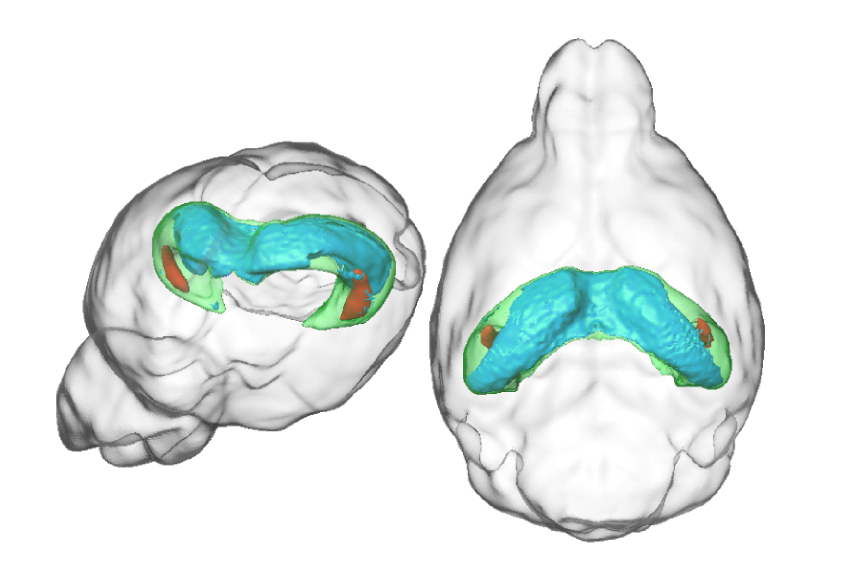
New mice expose consequences of key autism gene
Mice with an extra copy of the autism risk gene UBE3A have cognitive deficits and anxiety, but do not show any core features of the condition.
Mice with an extra copy of the autism risk gene UBE3A have cognitive deficits and anxiety. But they do not show core autism features, such as repetitive behaviors and social difficulties.
Researchers described the new mouse model yesterday at the 2016 Society for Neuroscience annual meeting in San Diego. The study shows that excess UBE3A causes behavioral changes in mice like those seen in people who have extra copies of the gene.
The UBE3A gene resides in a region of chromosome 15 called 15q11-13. It encodes at least three forms of a protein that regulates the breakdown of other proteins. Duplication of the region causes dup15q syndrome, which is characterized by cognitive impairment, anxiety, movement difficulties, seizures and autism. Researchers have traced most of these features to excess UBE3A.
In 2011, researchers at Harvard University reported that mice with additional UBE3A have little interest in social interaction and groom themselves excessively.
But the researchers tagged the surplus UBE3A protein in these mice with a molecular tracker that may interfere with the protein’s function, says Jill Silverman, assistant professor of psychiatry and behavioral sciences at the University of California, Davis. Silverman was not involved in the previous model.
If that’s true, it raises questions about whether the features seen in that model stem from excess UBE3A or from the tracker. The Harvard team declined to share their animals so other researchers could investigate further.
So Silverman and her collaborators created and characterized a new batch of UBE3A mice. This time they put a tracker at the opposite end of the protein, where it is unlikely to interfere with function.
Long form:
These mice are the first to express an extra copy of the longest form of UBE3A in the forebrain, which includes the cerebral cortex, thalamus and hypothalamus. Overexpressing one form of UBE3A at a time in mice allows researchers to dissect the functions of each form.
The new mice are anxious, shying away from open or well-lit areas. They show some learning deficits. They can associate a tone with a shock, but don’t connect the shock with the sights, smells and textures of the chamber where they receive it.
“We proved that overexpression of UBE3A causes phenotypes that are relevant to dup15q syndrome,” Silverman says. “We also found that a single isoform can cause behavioral problems just on its own.”
The mice do not appear to have any autism-like behaviors, however. They spend an ordinary amount of time grooming and are social. Nor do the mice show any obvious motor problems, a hallmark of people with dup15q syndrome.
“We were surprised we didn’t see motor [problems],” Silverman says. Her team plans to closely examine specific motor skills, such as gait and balance, with additional tests.
Brain scans reveal that the brains of the duplication mice are nearly 5 percent smaller than those of controls. This shrinkage primarily affects the hippocampus, a memory hub, as well as the cerebral cortex, amygdala (which governs emotions) and striatum (which controls movement and motivation). The structural changes may underlie the animals’ unusual behaviors.
Silverman says that in the time since she and her colleagues began making their own mice, the Harvard team has agreed to share theirs. She and her colleagues plan to compare the two strains on a battery of behavioral tests. Her team is also assessing the behaviors of mice with extra copies of the other UBE3A forms.
For more reports from the 2016 Society for Neuroscience annual meeting, please click here.
Recommended reading

New organoid atlas unveils phenotypic signatures of multiple neurodevelopmental conditions

Glutamate receptors, mRNA transcripts and SYNGAP1; and more

Among brain changes studied in autism, spotlight shifts to subcortex
Explore more from The Transmitter
Can neuroscientists decode memories solely from a map of synaptic connections?

AI-assisted coding: 10 simple rules to maintain scientific rigor
